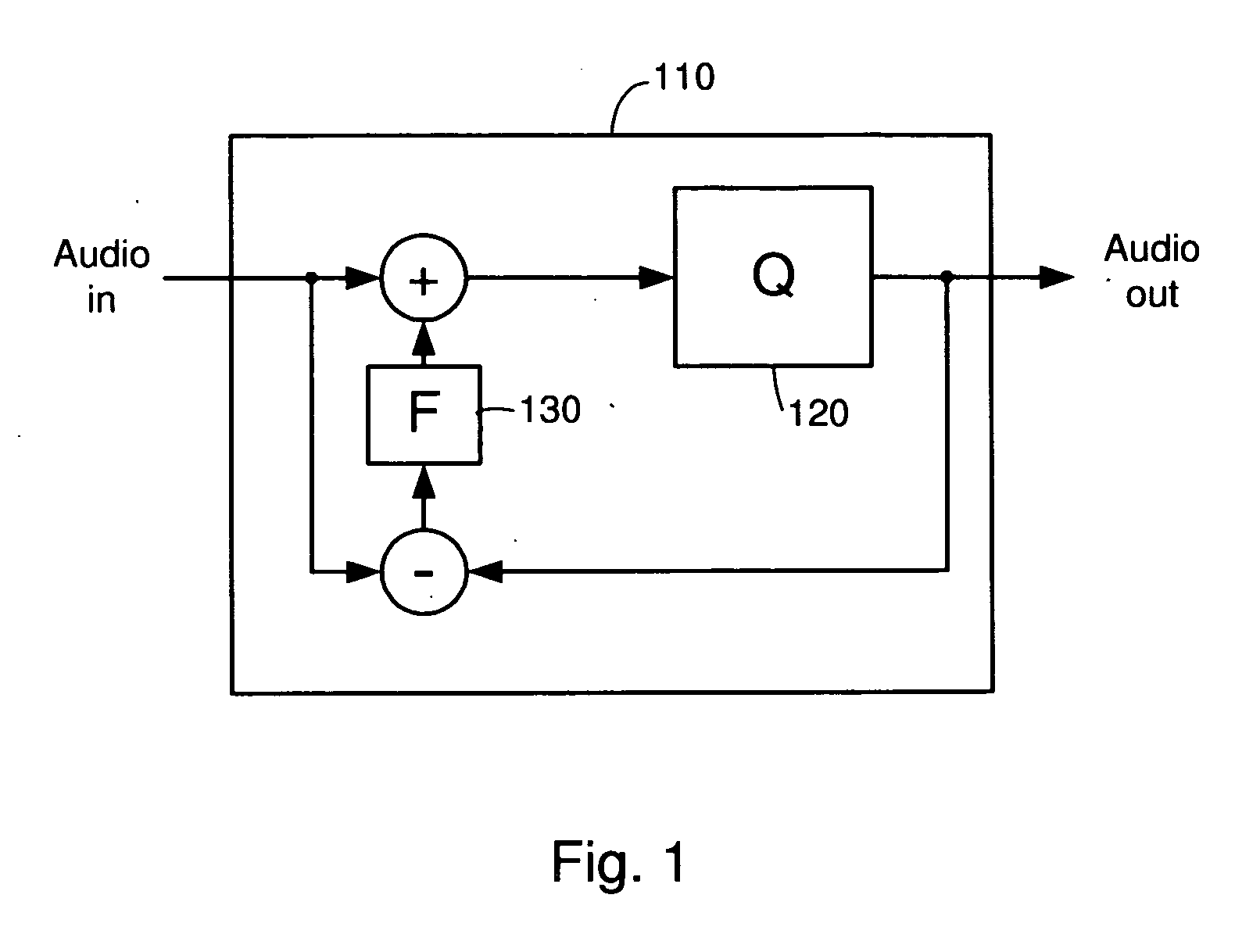Systems and methods for controlling transient response in the output of a noise shaper
a noise shaper and transient response technology, applied in the field of noise shapers, can solve the problems of spikes in signal, filter actually introduces a relatively large error, artifacts in quantizer output signals, etc., and achieve the effect of reducing or eliminating spikes or other undesirable transient responses
- Summary
- Abstract
- Description
- Claims
- Application Information
AI Technical Summary
Benefits of technology
Problems solved by technology
Method used
Image
Examples
Embodiment Construction
[0024] One or more embodiments of the invention are described below. It should be noted that these and any other embodiments described below are exemplary and are intended to be illustrative of the invention rather than limiting.
[0025] As described herein, various embodiments of the invention comprise systems and methods for reducing or eliminating undesirable transient response in clipped audio signals in digital amplifiers.
[0026] In one embodiment, a digital pulse width modulation (PWM) amplifier includes a noise shaper that quantizes and reshapes the noise spectrum of an input audio signal to produce an output audio signal. The noise shaper includes a quantizer configured to quantize the input audio signal and clip the signal if necessary. The noise shaper also includes a filter configured to receive a difference signal (corresponding to the difference between the output audio signal and the input audio signal,) filter the difference signal and add the filtered feedback signal ...
PUM
 Login to View More
Login to View More Abstract
Description
Claims
Application Information
 Login to View More
Login to View More - R&D
- Intellectual Property
- Life Sciences
- Materials
- Tech Scout
- Unparalleled Data Quality
- Higher Quality Content
- 60% Fewer Hallucinations
Browse by: Latest US Patents, China's latest patents, Technical Efficacy Thesaurus, Application Domain, Technology Topic, Popular Technical Reports.
© 2025 PatSnap. All rights reserved.Legal|Privacy policy|Modern Slavery Act Transparency Statement|Sitemap|About US| Contact US: help@patsnap.com



